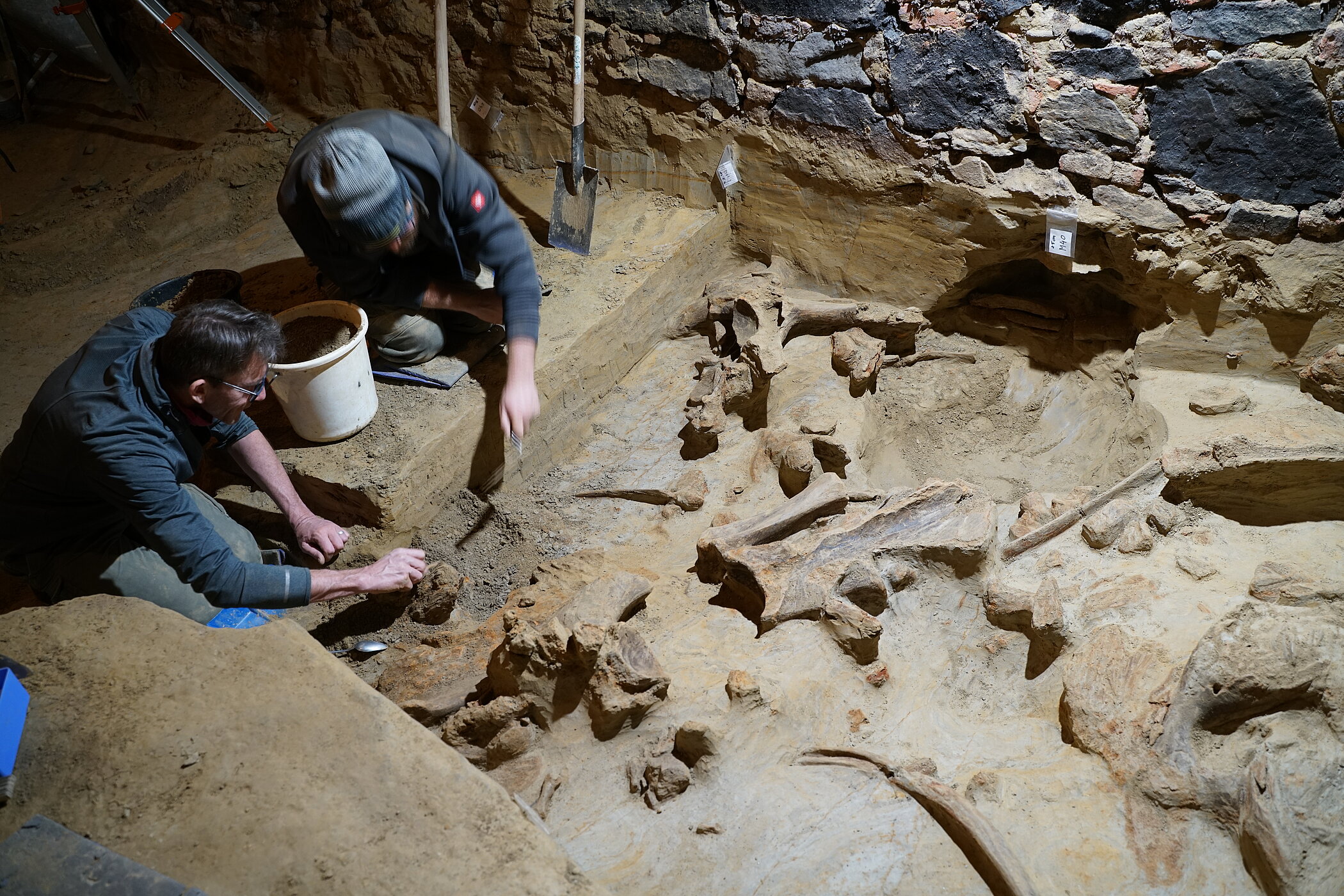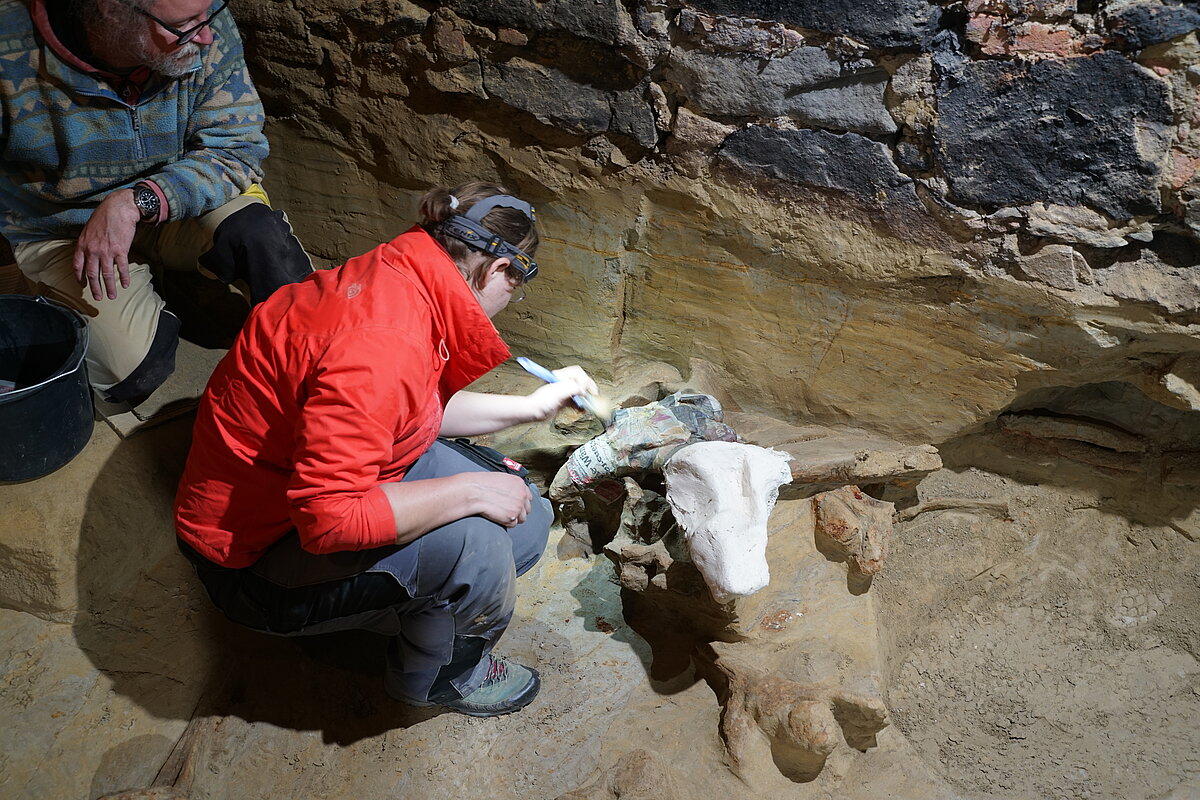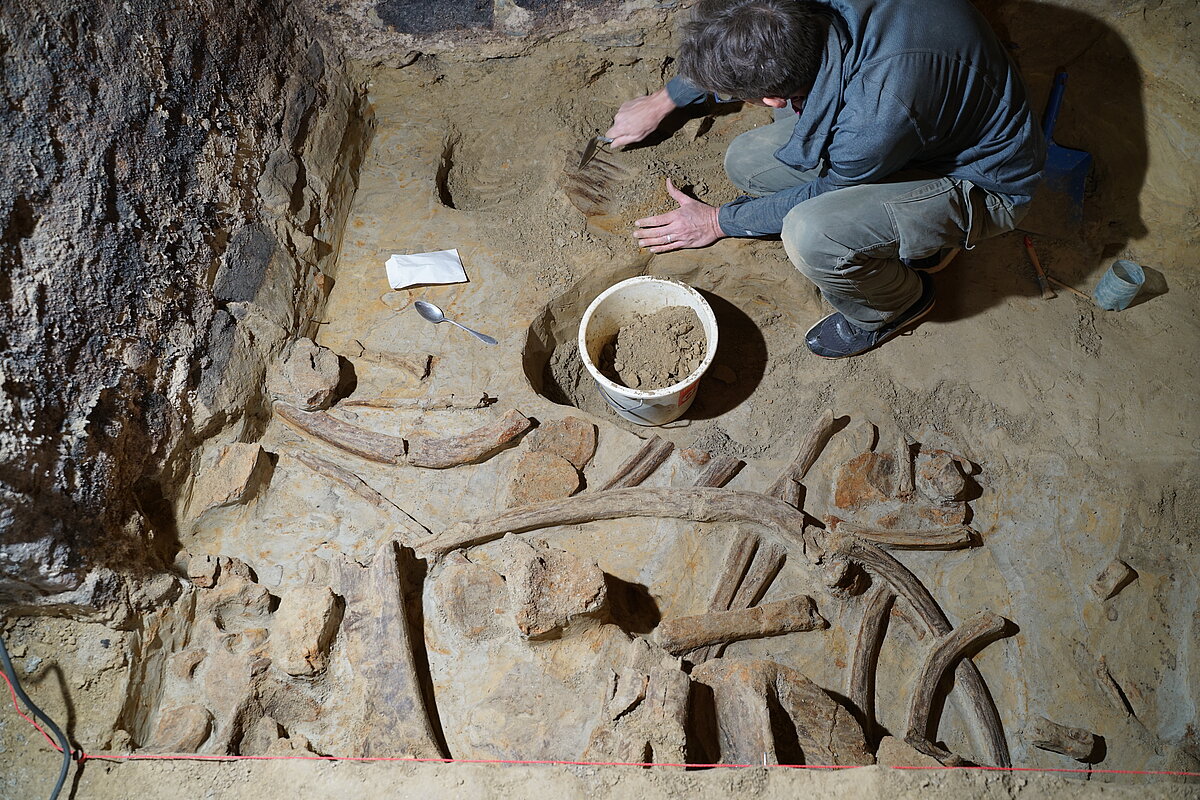Gobelsburg-Rossgraben: A Mammoth Find in a Wine Cellar
During excavation work in his wine cellar, a winemaker from Lower Austria came across large animal bones. A team from the ÖAI was able to confirm that these were mammoth bones. The site is characterized by an unusual density and thickness of the bone layer, which shows parallels to important sites in Dolní Věstonice I, Langmannersdorf, Krakau Spadzista and the Kargl Brickyard.
In March 2024, wine cellar owner Andreas Pernestorfer began leveling the floor of his sloping wine cellar. After the first spadeful of earth, he came across large bones. Reminded of his grandfather's stories about mammoth teeth, he immediately assessed the find correctly and notified the Federal Monuments Office (Bundesdenkmalamt). This brought in the experts from the Quaternary Archaeology Research Group of the ÖAI-ÖAW. In a 2.5-week initial excavation in May 2024 that was financially supported by the Federal Monuments Office, 10m² of the site were secured and recovered. The bones of at least three mammoth individuals were verified, which were no longer in direct anatomical association. The bones were deposited on a relatively steep SW-slope and were densely packed on top of and inside each other with a thickness of around 30cm. In cooperation with the Province of Lower Austria, the excavation company ARDIG - Archäologischer Dienst GesmbH, and the Natural History Museum Vienna, the damp and therefore very fragile bones were recovered and are now in the restoration workshop. Charcoal recovered with the bones can provide information about the age of the bone layer and provide initial clues as to the influence of humans on the formation of the site.
Over 100 years ago, mammoth bones, along with charcoal and stone artifacts, were found in the adjacent wine cellar and examined by Count Wurmbrand and Hugo Obermaier, among others. The discovered finds are kept in the Natural History Museum and examined as part of the project.
In the summer of 2024, new excavations and investigations will take place at this important site with financial support from the state of Lower Austria (Land Niederösterreich) and the Federal Monuments Office. Parallels to other known mammoth bone beds in the surrounding area are also being investigated.


